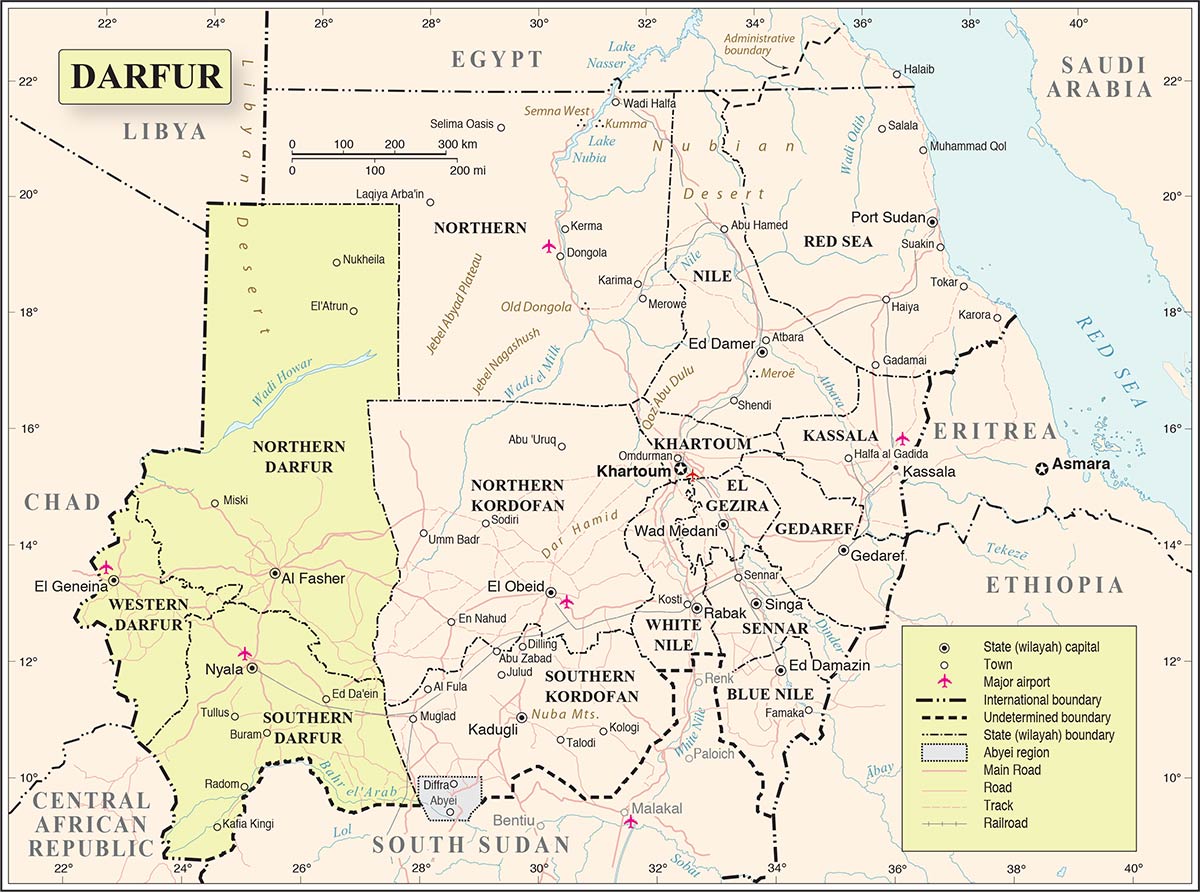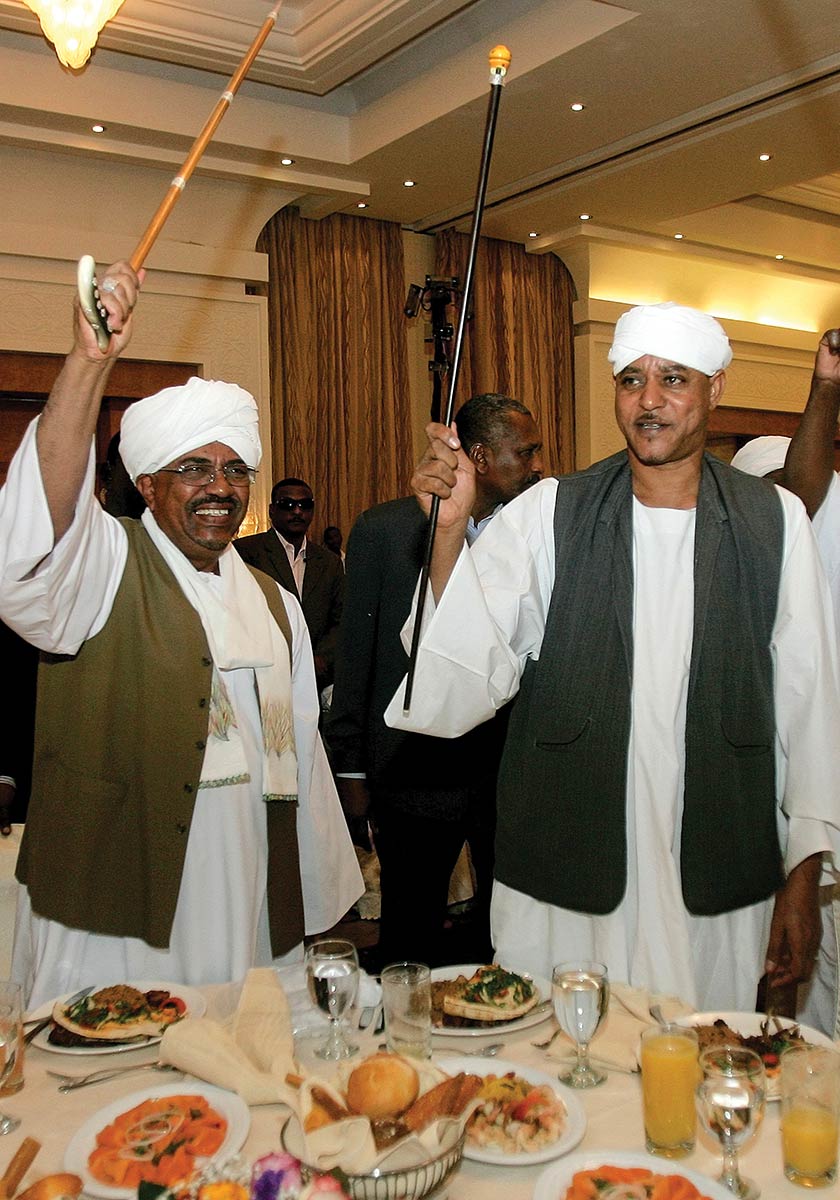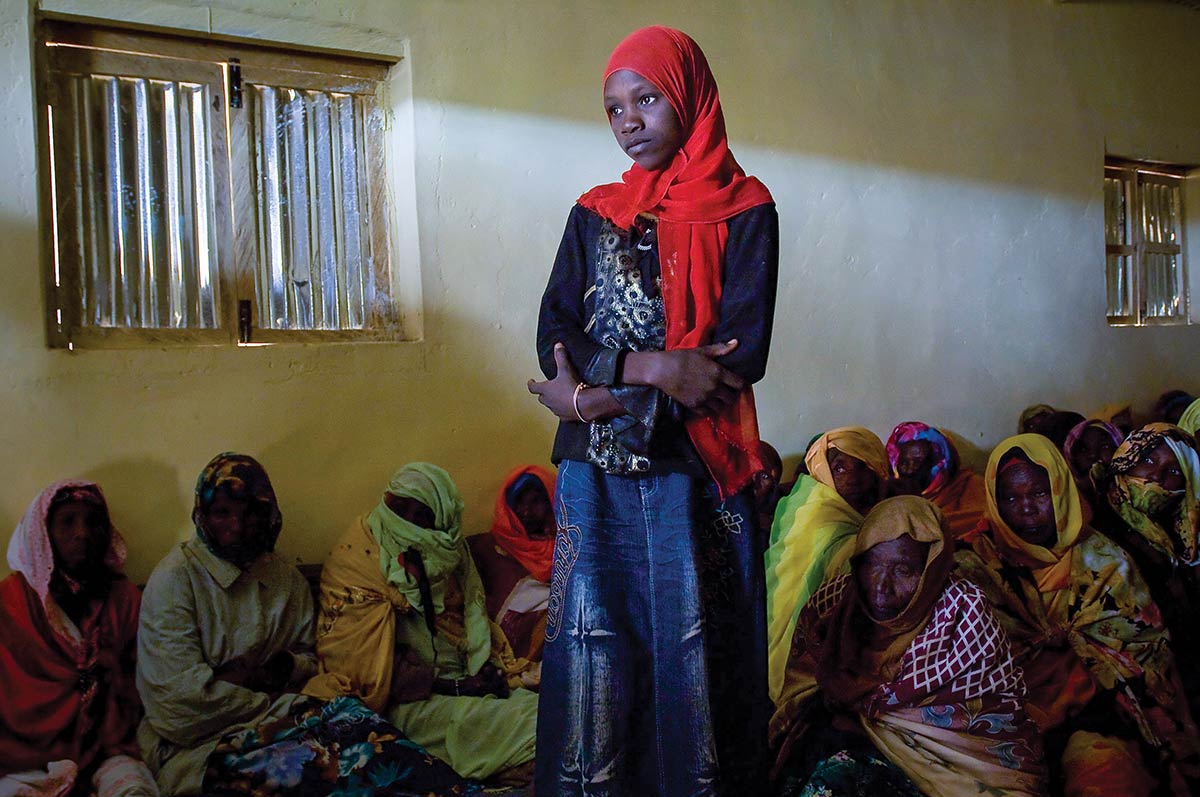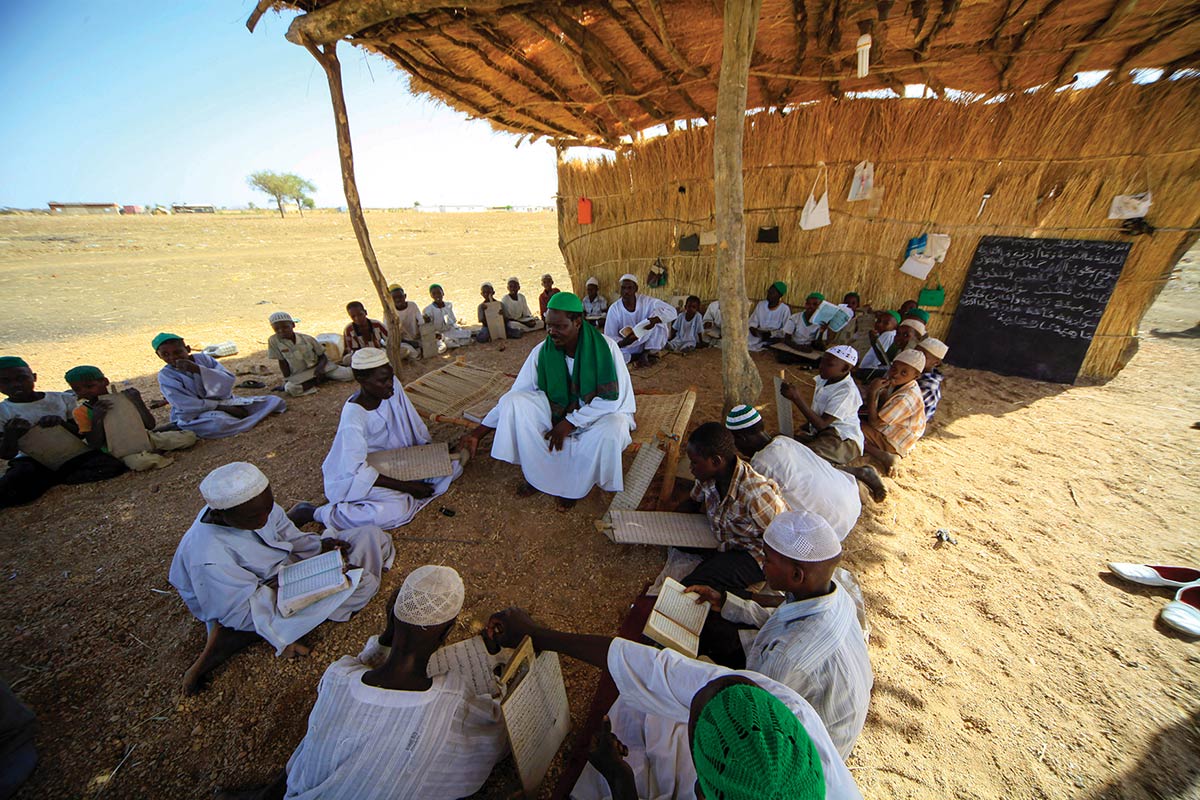Date: Wed, 26 Oct 2016 19:52:31 +0200
Ideology and Cultural Violnce in Darfur

Since its independence in 1956, Sudan has been ravaged by war. For residents of the western-most state in the country, Darfur, the war has led to ethnic cleansing on a massive scale.1 During the peak years of the war, 2003–2005, the Sudanese Air Force struck villages using assault helicopters and Russian-made Antonov bombers. Ground forces followed aerial attacks with infantry assaults, targeting ethnic tribes that the Sudanese government accused of supporting rebel resistance movements. Three ethnic tribes received the brunt of these assaults: the Fur, Massalit and Zaghawa. The perpetrators included the Sudanese Armed Forces (SAF), as well as the Arab militia group known as the Janjaweed. From a sociological perspective, the Janjaweed is comprised of a loose consolidation of five subgroups: former bandits, demobilised government soldiers, young members of Arab tribes, common criminals and young unemployed Arab men.2 The term janjaweed originally meant “horsemen with G [Jim] guns”,3 and later evolved to mean “devil on a horse”.4 The attackers systematically killed men, raped women and abducted children; they also targeted essential resources, destroying livestock, torching fields, poisoning wells and levelling health clinics and schools.5 According to United Nations (UN) reports, more than 300 000 Darfuri civilians have been killed since 2003, and approximately 3 000 000 people were forcibly exiled.6 The UN Security Council condemned such attacks in 2004, and imposed sanctions and a ban on the import and export of military equipment to any non-state militia group, such as the Janjaweed. At the time of writing, the SAF is facing four major resistance movements: the Justice and Equality Movement (JEM), led currently by Gibril Ibrahim; the Sudan Liberation Movement/Army (SLM/A), led by Abdul Wahid al-Nur; a separate branch of the SLM/A, led by Minni Minawi; and an umbrella group known as the Liberation and Justice Movement (LJM), comprising factions of previous movements, led by Tigani El-Sissi.7

The militancy of Sudan’s central government is driven, in part, by an ideology that promotes a polarising duality between “Sudanese Arabs” and “Sudanese Africans”. The Sudanese Arabs are treated as genuine citizens of the nation – true Sudanese – who are worthy of rights, capable of holding positions of power and suitable subjects of state protection. In stark contrast, Sudanese Africans are assigned a subordinate status – presumably because of their historical subjugation as slaves, their apparently alien cultural practices and their alleged incapacity to hold positions of leadership. This alleged duality has a direct impact on the government’s military campaign in Darfur. For example, in conjunction with monetary incentives and the lure of administration positions, government officials exploited the Janjaweed’s historical grievances against non-Arab tribes.8
In this article, we show that the Arab-African duality represents a case of cultural violence against the non-Arab tribes of Darfur. In general, cultural violence refers to aspects of culture – such as religious faith, educational institutions, ideological notions, the arts and patterns of speech – that are strategically constructed and coordinated to support systems of stark inequality between society’s “haves” and “have nots” while burying awareness of such inequalities under layers of cultural symbols, such as flags, anthems, military marches, icons of political leaders, and so on.9 We identify two social areas in which such violence occurs: the policies of the nation’s education system and government-prompted practices regarding changes in the use of language.
Arabism and Political Islam
The adherents of Arabism seek to rejoice in the fruits of Arab culture, achievements and conquests. Its followers seek to share vicariously in the rich heritage of Arab nations, which includes past military conquests.10 Central to this ideology is the social-political differentiation between the pure citizen – who is worthy of rights, privileges and benefits that the state can offer – and the impure subject that state officials regard with suspicion, mistrust or possibly disdain.
 Sudanese President, Omar al-Bashir (left), with Sudan’s Janjaweed militia leader, Mussa Hilal, during a ceremony in Khartoum (20 January 2012). (GALLO IMAGES/AFP/ASHRAF SHAZLY)
Sudanese President, Omar al-Bashir (left), with Sudan’s Janjaweed militia leader, Mussa Hilal, during a ceremony in Khartoum (20 January 2012). (GALLO IMAGES/AFP/ASHRAF SHAZLY)Of course, Arabism did not originate with the current social-political leadership. Before Sudan achieved independence from the British, Europeans defined Sudan as a nation of two distinct population groups. Residents of the northern region – primarily Arabs and Muslims – were cast as civilized people, because their cultural practices resembled those of “advanced” societies (meaning European), while the southern Sudanese were thought to be primitive people. This constructed duality served as an ideological cover for a flourishing slave trade orchestrated by colonial rulers. When the British conquered Sudan, the separation of the population continued, with Sudanese Arabs cast as superior by race to Africans and with special privileges going to Arabs, such as access to higher education, positions of power and economic resources.11
From the early days of Omar al-Bashir’s presidency, the central government imposed an ideology that, in effect, politicised Islam. Adherents of political Islam seek to establish a political state based on a particular interpretation of the sacred text. They “see Islam not as a mere religion, but as a political ideology which should be integrated into all aspects of society: politics, law, economy, social justice, foreign policy”.12 Based on its version of Islam, this movement’s members grounded their political activism in a personal commitment to follow the teachings of the Prophet.13 Muslims who hold alternative interpretations of the sacred text are caste as infidels and subject to persecution.14
In addition to its religious framing, this ideological division between Arabs and Africans comes with a stereotypical racial division that reflects a strong preference for light skin rather than dark skin, which is associated with the legacy of slavery.15 In fact, many Africans are shamed by their dark skin and seek treatments to get lighter skin through the use of bleaches, cosmetics and medicines. Despite the stereotypical distinction between light-skinned Arabs and dark-skinned Africans, the Arab/non-Arab distinction in fact cannot be associated with skin colour. While some people who self-identify as Arabs are light-skinned, many others are not. People are often described not as black, but as brown or green. To be green in Sudan means to bear the privilege of Arab ancestry – or, more specifically, to be not black. Sudanese passports, for example, rarely describe a skin colour as black, but instead as green, as a national standard. Yet, depending on the region, the same characteristics by which someone self-identifies as Arab can also be cited for a Sudanese to self-identify as African.16
Central Government and Political Elites
The military coup of 1989 that elevated al-Bashir to the presidency represented a major victory for hardline Islamists. At that time, the figurehead of this movement was a Sunni Muslim named Hassan al-Turabi. His leadership represents the political ascendency of the National Congress Party (NCP), which was called the National Islamic Front until 1993. Today, its members hold key positions throughout society – business, religion, military and security.17 National governance was and is controlled by the NCP.
 Some of the last people from the Zaghawa tribe live next to the United Nations–African Union Mission in Darfur (UNAMID) base for protection before leaving for the Zam Zam camp for internally displaced people in North Darfur (March 2009). (UN PHOTO/TOBIN JONES)
Some of the last people from the Zaghawa tribe live next to the United Nations–African Union Mission in Darfur (UNAMID) base for protection before leaving for the Zam Zam camp for internally displaced people in North Darfur (March 2009). (UN PHOTO/TOBIN JONES)
The political elites in Khartoum have implemented policies that seek to protect and promote domination of the northern riverine Arabs, giving them privileges, power and prestige that no African – or even Arab from Darfur – could expect to enjoy.18 Among these Arabs, the higher status group is the Jaali. The ideology of the Jaali – to advance the Arab culture and their form of Islam throughout Sudan – has been embraced by post-colonial governments. The NCP controls the nation’s civil affairs, which affects economics, healthcare, family law and education.19 For example, under the current regime, the ex-minister of finance and national economics, Abdel Rahim Mohamed Hamdi, called for the government to focus its economic resources on the limited northern region. He argued that the population of this region deserves great economic resources because they are descendants of the traditional, pure Sudanese – which, in turn, makes a political alliance with these people “easy”. Presumably, these people could not survive as an effective state with the burdensome drain of resources going to other regions such as eastern Sudan, Darfur and the southern region.20
The NCP also shapes government policy in favour of advancing an Islamic state.21 In the early years of his presidency, al-Bashir launched a campaign to impose an Arab-African rank ordering throughout the nation, targeting every village, school and clinic according to Arab-Islamic practices.22 This was a campaign to advance the ideology of national purity, with “pure” Sudanese being those who speak only Arabic, practise Sharia23 and live according to the Arabic-Muslim culture.24 With this campaign, Sudan would be a beacon of hope for a pan-Arabic movement.25 Those Sudanese who deviate from such social practices are stigmatised as bad Muslims and often perceived to represent a danger to the nation. Al-Bashir declared in 1990 that his regime is “fighting for Sudan’s Arabic-Islamic existence, waging Jihad against the rebels”.26
Al-Bashir assigned this campaign to Ali Osman Mohammed Taha, who was appointed minister of Social Affairs. Taha created the so-called Civilizational Project, which embraces the mission of purifying Sudanese society and imposing strict Islamic norms, including Sharia, for all Sudanese. A cadre of ideologically driven activists was sent throughout the country to foment a new Islamic consciousness in every village and region according to Arab-Islamic practices.27
The activists targeted the educational system, creating the so-called higher education revolution throughout the nation’s 26 universities. All principals, deans and heads of department were required to be loyal to both the NCP edicts and government policies. With such transformation, the government dismissed a large number of professors under a policy known as “Al-Saleh Al’Am”, which means “for the sake of public interests”.28 And all students who studied abroad were required to return home, at the risk of losing all government support for their studies abroad.
The 1990 Higher Education Act called for major reforms that were strategically designed to promote Islamic culture, values and norms, as understood by the NCP.29 To implement this Act, in 1991 the Ministry of Higher Education created the National Center for Curriculum and Education Research (NCCER), which was charged with designing, writing and distributing curricula throughout the country. Such curricula were crafted to promote a single vision of Islam, with emphasis on Sharia, while simultaneously suppressing the diversity of Darfuri culture, languages, religious beliefs and history. The textbooks linked to these educational policies include distortions and omissions of Darfuri achievements, contributions and glories. For example, the history of Darfur’s flourishing economy in past centuries is omitted. Also omitted is the history that in the seventeenth and eighteenth centuries, Darfur enjoyed a period of relative prosperity, due to extensive trade with regions in what is now northern Sudan.
The cultural violence is also extended to policies about language. Particular attention is given to the imposition of “Arabism”, which includes the requirement that Arabic would be the only official language of instruction for all educational institutions, places of worship and public media. Those Darfurians who speak only an indigenous language are excluded from participation in such social institutions. Even the meanings of specific terms have been changed. For example, the duality of “Arab-African” gained widespread usage from the government’s description of certain non-Arab tribes. By the time non-Arab groups – led by the Fur, Zaghawa and Massalit – engaged in military conflict with the central government in 2003, the term “Arab-African” became widely circulated throughout the nation, reflecting the government’s divisive tactics.30 Yet, this apparent duality between Sudanese Arabs and Africans glosses over the following critical fact: there are no purely objective indicators to distinguish between all Sudanese Arabs and Sudanese Africans. Of course, both groups live in Africa, and language cannot be the mark of differentiation, since most Sudanese – Arabs and non-Arabs alike – speak Arabic, as well as other languages associated with their tribe or
 A sheikh helps students to read the koran in a khalwa, or quranic school. (GALLO IMAGES/REUTERS/MOHAMED NURELDIN ABDALLAH)
A sheikh helps students to read the koran in a khalwa, or quranic school. (GALLO IMAGES/REUTERS/MOHAMED NURELDIN ABDALLAH)
In addition, during the years of intense fighting in Darfur (from 2002 to 2006), the SAF exploited the forced displacement of local residents to change the names of the villages and cities from those given by indigenous culture. Many of the new names reflect Arab-Islamic meanings. For example, the name given by indigenous people to the village of Umbala was changed by the central government to the Arabic Umkhier, which means “mother of blessing”. The village of Khor Jahenam means “the stream of hell”, which is based on a myth told by the local culture about something tragic; the central government changed it to the Arab name Almoda, which is a position in the local authority. Fugo Kafur literally means “the mountain of infidels”; the government changed it to the Arab name Jebel Moia, meaning “the mountain of water”. Attempts to resist such name changes by local residents have resulted in severe repressive measures by government officials.
In sum, the two forms of cultural violence presented – first, the policies of the Ministry of Higher Education to transform curricula throughout the nation, and second, the government’s practice to change the meanings of familiar terms and impose new names for villages and cities – represent a campaign to impose a national rank-ordering. While certain segments of the Arab population are cast as genuinely Sudanese, the non-Arab group members as a whole are not; they are denigrated, humiliated and made to feel inferior by their African identity. The political implications of this ordering are obvious: only Sudanese Arabs are worthy of positions of power and authority throughout the country.
Endnotes
- In general, ethnic cleansing occurs when an ethnic population is forcibly removed from a geographical region through campaigns of mass murder, torture, terror, sexual violence or destruction of property. See United Nations Security Council (1994) ‘Final Report of the Commission of Experts (S/1994/674)’, Available at: <http://www.icty.org/x/file/About/OTP/un_commission_of_experts_report1994_en.pdf> [Accessed 18 November 2014].
- Prunier, Gerard (2007) Darfur the Ambiguous Genocide. Ithaca: Cornell University Press, pp. 97–8.
- Flint, Julie (2009) Beyond ‘Janjaweed’: Understanding the Militias of Darfur. Geneva: Small Arms Survey, Graduate Institute of International and Development Studies, p. 17, Available at: <http://www.smallarmssurveysudan.org/pdfs/HSBA-SWP-17-Beyond-Janjaweed.pdf> [Accessed 30 November 2014].
- The Janjaweed currently operating in Darfur is called the Rapid Support Forces (RSF).
- Human Rights Watch (2004) ‘Darfur Destroyed: Ethnic Cleansing by Government and Militia Forces in Western Sudan’, pp. 13–32, Available at: <http://www.hrw.org/sites/default/files/reports/sudan0504full.pdf> [Accessed 18 November 2015].
- IDMC (2011) ‘Estimates for the Total Number of IDPs for All of Sudan (as of January 2011)’, Available at: <http://www.internal-displacement.org/idmc/website/countries.nsf/(httpEnvelopes)/0026B2F86813855FC1257570006185A0?OpenDocument> [Accessed 5 November 2014].
- In a previous publication, one author of this article (DR) argues that the violence in Darfur is the effect of a multiplicity of four distinct conflicts, operating to mutual effect. See Brosché, Johan and Rothbart, Daniel (2013) Violent Conflict and Peacebuilding: The Continuing Crisis in Darfur. New York: Routledge Press.
- Haggar, Ali (2007) The Origins and Organization of the Janjwiid in Darfur. In De Waal, Alex (ed.) War in Darfur and the Search for Peace. Cambridge MA: Global Equity Initiative, Harvard University and Justice Africa, pp. 128–130.
- Galtung, Johan (1990) Cultural Violence. Journal of Peace Research, 27, pp. 291–305.
- Deng, Francis (1995) War of Visions: Conflict of Identities in the Sudan. Washington DC: The Brookings Institution, pp. 106–113.
- Ibid., p. 422.
- Roy, Oliver and Volk, Carol (1998) The Failure of Political Islam. Cambridge MA: Harvard University Press, p. 153.
- Michon, Jean-Louis (2008) Introduction to Traditional Islam: Foundations, Art and Spirituality. Bloomington: World Wisdom.
- Hroub, Khalid (2011) Political Islam: Context Versus Ideology. London: Saqi Books.
- Idris, Amir (2010) Beyond Arabs and Africans in Sudan. In Deng, Francis (ed.) Sudan in the Making. Trenton: The Red Sea Press, p. 205.
- Ryle, John (2011) Peoples and Cultures in Two Sudans. In Ryle, John, Willis, Justin, Baldo, Suliman and Jok, Jok Madut (eds) The Sudan Handbook. London: Rift Valley Institute, p. 76.
- Temin, John and Murphy, Theodore (2011) ‘Toward a New Republic of Sudan’, p. 4, Available at: <http://www.usip.org/files/resources/SR278.pdf> [Accessed 30 July 2016].
- Sharkey, Heather (2008) Arab Identity and Ideology in Sudan: The Politics of Language, Ethnicity and Race. African Affairs, 107, p. 28.
- Assal, Monzoul (2010) The Government of Sudan and the Darfurian Armed Groups. In Black, David and Williams, Paul (eds) The International Politics of Mass Atrocities: The Case of Darfur. New York NY: Routledge, pp. 8–9.
- El-Din, Ahmed (2007) Islam and Islamism in Darfur. In De Waal, Alex (ed.) op. cit., p. 102.
- Ibid., p. 105.
- De Waal, Alex and Flint, Julie (2008) Darfur – A New History of a Long War. London/New York: International African Institute, the Royal African Society and Social Science Research Council, p. 28.
- Sharia refers to Islamic law that was developed from various interpretations of the Koran and teachings of the Prophet. In countries where it is commonly followed, such as Sudan, Sharia establishes norms for religious duties and secular policies of the government, including policies of criminal law.
- Sharkey, Heather (2008) op. cit., p. 28.
- Mukhtar, Albaquir (2015) Beyond Darfur: Identity and Conflict in Sudan. Unpublished manuscript. pp. 8–9.
- Sharkey, Heather (2008), op. cit., p. 42.
- De Waal, Alex and Flint, Julie (2008), op. cit., p. 28.
- Ibid., p. 52.
- Gasima, Gamal (2010) Reflecting on Sudan’s Higher Education Revolution under Al-Bashir’s Regime. Comparative & International Higher Education, 2, p. 50.
- Flint, Julie (2009), op. cit., p. 26.